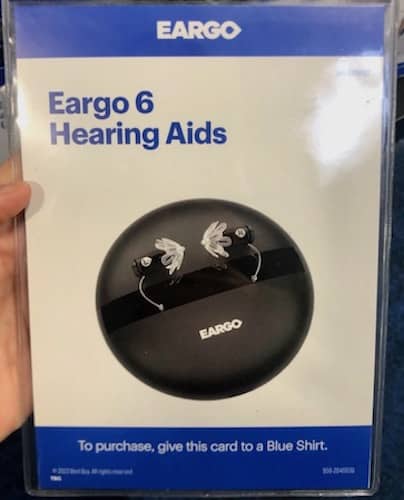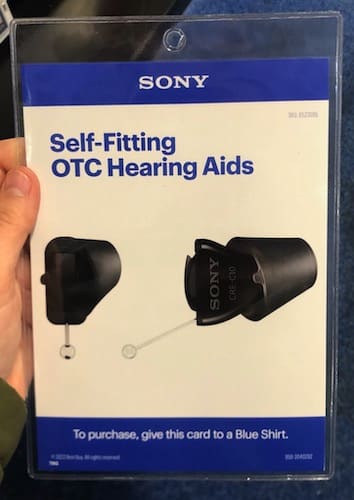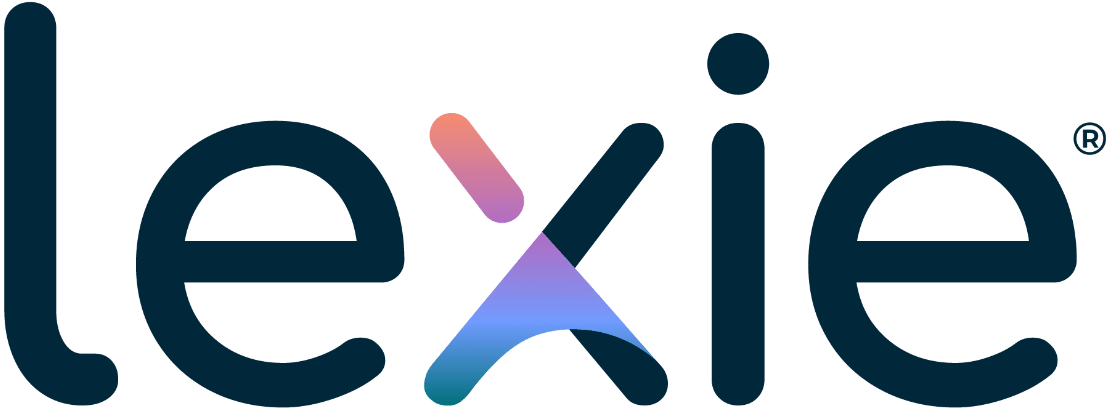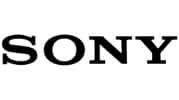Best Buy Hearing Aids 2025: Reviews and Prices
Key Takeaways
- The Jabra Enhance Plus is our top pick for its balance of price and features.
- Best Buy offers a range of OTC hearing aids, catering to different needs and preferences.
- The convenience of in-store shopping at Best Buy allows hands-on experience before purchase.
With some prescription hearing aids costing up to $6,000 or more per pair, lower cost and more accessible over-the-counter (OTC) hearing aids have made a drastic change in the hearing aid market. Not only can consumers now buy OTC hearing aids for mild to moderate hearing loss without a medical exam, prescription, or professional fitting, but now you can buy hearing aids from well-known, national retailers like Best Buy, a leading provider of technology products.
Purchasing hearing aids from Best Buy allows you to reap the cost benefits of OTC hearing aids while also letting you shop in person rather than just online, which was the only way to buy OTC hearing aids until recently. By shopping in store, you’re able to look at your hearing aids up close, touch them, and in some cases, try them on.
But finding the best hearing aid for you or a loved one takes time. After all, Best Buy is a respected consumer electronics retailer, but does that extend to the world of hearing aids? In this review, our team shares the top four choices Best Buy offers to help you determine whether these devices are right for you.
A quick look at the best hearing aids from Best Buy
- Best for the Price: Jabra Enhance Plus
- Best for Adaptive Sound: Eargo 6
- Best OTC Self-Fitting: Lexie B2
- Best Disposable Battery: Sony CRE C10
Table 1 Comparison of Best Buy hearing aids
| Brand and model | Price per pair | Score (out of 5) | Hearing aid style | Adjustment | Battery life | Bluetooth | Warranty | Financing |
|---|---|---|---|---|---|---|---|---|
| Jabra Enhance Plus | $499 | 4.18 | In-the-canal (ITC) | App | 12 hours | Yes, app only | 1 year | Yes |
| Eargo 6 | $2,050 | 3.94 | Completely-in-canal (CIC) | App | 16 hours | Yes, app only | 1 year | Yes |
| Lexie B2 | $999 | 4.4 | Receiver-in-canal (RIC) | App | 18 hours | Yes | 1 year | Yes |
| Sony CRE C10 | $999 | 4.29 | Completely-in-canal (CIC) | App | 70 hours | Yes, app only | 1 year | Yes |
Best Buy hearing aids review
Best for the Price: Jabra Enhance Plus

- Price per pair: $499
- Hearing aid style: In-the-canal (ITC)
- Adjustment: App
- Type of hearing loss: Mild to moderate
- Dimensions: 0.76 inches x 0.46 inches x 0.59 inches (length x width x height)
- Weight: 0.11 ounces (oz)
- Rechargeable battery: Yes
- Bluetooth and mobile app capabilities: Yes, but Bluetooth connectivity is limited to the app and to Jabra accessories
- Warranty: One year
- Financing: Yes
Respondents to our team’s survey of hearing aid users chose “price” as the second-most important consideration when shopping for a hearing aid, behind only “easy to set up and use.” With that in mind, we analyzed the different price points of Best Buy hearing aids. Our team selected the Jabra Enhance Plus as “Best for the Price” because even though it’s not the lowest price model Best Buy has, the device has more features than other lower-priced OTC hearing aids. For example, the Go Hearing Go Lite devices are $199, but they don’t have listening channels, whereas the Jabra Enhance Plus has three. Also, the Jabra Enhance Plus is the lowest-priced hearing aid on this list.
To make hearing aid adjustments, you’ll need to connect your Jabra Enhance Plus to the Jabra Enhance app. The device has three listening modes—adaptive, focus, and surround—one fewer than Eargo 6. Each mode has a different purpose: Adaptive mode self-adjusts to what’s happening around you to help you hear better when in noisy environments like restaurants. Focus mode hones in on the sounds close to you, like one-on-one conversations. And surround mode allows you to hear more ambient or background sound, like when you’re at a concert or movie theater.
When you purchase from Best Buy, the Jabra Enhance Plus comes with small, medium, and large dome-shaped tips, as well as a carrying case. Best Buy doesn’t offer other accessories for the Jabra Enhance Plus, but you can purchase additional tips for $15 on the Jabra website.
Our team found that the average battery life for rechargeable OTC hearing aids is around 16–18 hours. That could make the comparatively shorter 12-hour battery life of the Jabra Enhance Plus a drawback for some users, since this means you may have to remove your hearing aids sooner and ensure you have your charger with you to recharge them.
Customer service
On the Jabra website, the company has a support section with frequently asked questions and helpful information, such as how to pair Bluetooth to Jabra devices.
You also can fill out an online form or call 800-327-2230 from Monday through Friday from 8 a.m. to 8 p.m. ET, and Saturday to Sunday from 10 a.m. to 5 p.m. ET., for specific store-related purchase questions. If you prefer to go in person, you can head to your nearest Best Buy store or a Jabra certified center, which are hearing clinics Jabra has partnered with.
Payment options
You can purchase Jabra Enhance Plus at Best Buy stores or online at the Jabra website. To pay on the Jabra website, you can use Amazon Pay, PayPal, or any major credit card (including Best Buy credit cards). Jabra also accepts financing through Klarna, which lets you split your hearing aid purchase into four interest-free payments.
Where to buy
- Best Buy stores
- BestBuy.com
- JabraEnhance.com
Best for Adaptive Sound: Eargo 6

- Price per pair: $2,050
- Hearing aid style: Completely-in-canal (CIC)
- Adjustment: App
- Type of hearing loss: Mild to moderate high-frequency
- Dimensions: 0.7” L x 0.27” W x 0.59” H
- Weight: 0.11 oz
- Rechargeable battery: Yes
- Bluetooth and mobile app capabilities: Yes, but Bluetooth connectivity is limited to the app
- Warranty: One year
- Financing: Yes
The FDA-cleared Eargo 6 won “Best for Adaptive Sound” by our team due to its Sound Adjust feature. As you move between different environments, Sound Adjust changes the hearing aid settings to help you hear conversations better. For example, it will reduce background noise in a noisy location and focus on the sounds closest to you. Jabra Enhance Plus also has an “adaptive mode” that is similar to this technology, but we liked the unique “mask mode” with Eargo Sound Adjust technology. Mask mode makes it easier for you to understand speech when you’re speaking with somebody wearing a face mask.
This device also connects to the Eargo app, which allows for a discreet way to adjust your hearing aids and where you can select “mask mode.” You can use the app to change through four settings: normal, TV, restaurant, and phone. You’ll also find user guides, help videos, and tutorials in the app, which are handy if you’re on-the-go and need to be reminded of the finer points of operating your hearing aids.
During our team’s hands-on testing, they measured the Eargo 6 charging cord at 4 feet, 8 inches, which was the second-longest cord, beaten only by Starkey hearing aids, with a cord of 4 feet, 10 inches. The average length from our testing was about 3 feet. If you need to buy a replacement power cord and adapter, or hearing aid tips, you can purchase them through the Eargo website for $30 and $40, respectively. Best Buy doesn’t carry Eargo accessories.
The Eargo 6 has a one-year warranty. But be aware the loss or damage policy only covers “loss or damage not related to normal use.” Eargo will replace the hearing aid and charger for loss or damage (no more than one time) for $295 each.
Customer service
To connect with someone directly at Eargo, you can call customer service at 855-610-3877, Monday through Friday, from 8 a.m. to 8 p.m. CT, and Saturday from 8 a.m. to 5 p.m. CT.
The Eargo website also has a live chat—you’ll find the chat icon in the lower right corner of each website page—with the same availability as by phone.
Payment options
Best Buy sells the Eargo 6 on its website and in-store for a one-time credit card payment or through financing.
You can also purchase Eargo 6 through the Eargo company website, where you can pay by credit card, HSA and FSA debit card, or through financing for up to 24 months through a third-party lender. If you prefer ordering by phone, you can reach an Eargo salesperson at 800-613-2746.
Where to buy
- Best Buy stores
- BestBuy.com
- Eargo.com
Best OTC Self-Fitting: Lexie B2

- Price per pair: $999
- Hearing aid style: Receiver-in-canal (RIC)
- Adjustment: App
- Type of hearing loss: Mild to moderate
- Dimensions: 5.04” L x 4.72” W x 2.83” H
- Weight: 0.02 oz
- Rechargeable battery: Yes
- Bluetooth and mobile app capabilities: Yes; phone call streaming on iPhone only
- Warranty: One year
- Financing: Yes
Our team picked the Lexie B2 for “Best OTC Self-Fitting” hearing aid on the strength of its detailed adjustment settings, which ensure you’re getting the best and most fine-tuned listening experience possible in an OTC hearing aid. And although the settings on the Lexie app are similar to those on the Eargo app, the Lexie B2 costs nearly $2,000 less than the FDA-cleared, self-fitting Eargo 6.
Not all OTC hearing aids are self-fitting. This term means the user can adjust the settings themselves rather than relying on a hearing specialist to make adjustments. For example, in the Lexie app, you can switch between listening profiles, called “environment settings,” and you can also adjust your hearing aids through a few different parameters, such as the balance between your left and right ears, bass, and treble. If you’re comfortable with technology and understand fine-tuning, these devices may have the precision settings you’re looking for.
On the Lexie website, you can choose to purchase additional Lexie B2 accessories, such as a replacement charging case ($90) or a hearing aid care kit ($65). These extra items are not available for purchase through Best Buy.
Even though Lexie only offers a one-year warranty (Eargo offers two years), if you order the Lexie B2 through the company’s website, you’ll get a 45-day trial period to allow you time to decide whether to keep them. But a benefit of purchasing through Best Buy is that the retailer allows for a 60-day return period, giving you an additional two weeks to decide whether they are a good fit for you. Since many hearing specialists say it takes several weeks to get used to a new device, having a longer trial period will give you time to ensure your OTC hearing aid fits well and is helping your mild to moderate hearing loss.
Customer service
You can connect with Lexie customer service by email at sales@lexiehearing.com, by phone at 800-499-1336, seven days a week from 8 a.m. to 8 p.m. ET, and through the company’s online contact form.
Payment options
You can purchase the Lexie B2 in Best Buy stores and online through a one-time credit card payment or through financing. If you purchase the devices through the Lexie website, you can pay by credit card, FSA or HSA card, or through a monthly payment plan.
Where to buy
- Best Buy stores
- BestBuy.com
- Lexiehearing.com
Best Disposable Battery: Sony CRE C10

- Price per pair: $999
- Hearing aid style: Completely-in-canal (CIC)
- Adjustment: App
- Type of hearing loss: Mild to moderate
- Dimensions: 1” L x 2.94” W x 2.24” H
- Weight: 0.06 oz
- Rechargeable battery: No
- Bluetooth and mobile app capabilities: Yes, but Bluetooth connectivity is limited to the app
- Warranty: One year
- Financing: Yes
The Sony CRE C10 won “Best Disposable Battery” by our team because these devices have features similar to the rechargeable OTC hearing aids on this list, such as app capabilities and noise reduction, but they use disposable batteries. That may be inconvenient for some (after all, “rechargeable batteries” was the second-most popular hearing aid feature among respondents to our team’s survey, behind only “digital noise reduction”), but that gives the Sony CRE C10 by far the longest battery life on this list.
These devices come with size 10 hearing aid batteries, which typically last 5–7 days, but Sony states in its specifications these batteries will last up to 70 hours with continuous use. If you don’t use them constantly and turn them off daily, like when you’re sleeping, the batteries may last longer.
Like the other digital hearing aids on this list that connect with apps, the Sony CRE C10 connects to the Sony Hearing Control smartphone app via Bluetooth. You can use the app to customize your hearing aid settings, like adjusting volume or loudness in both ears. As for accessories, you can purchase more hearing aid tips directly from Best Buy or through the Sony website for $14.99 (both sites).
A potential downside to disposable hearing aid batteries is you will have to replace them often, which, because the batteries are very small, can present a challenge for people with dexterity and/or vision issues. A potential upside is you can keep extra batteries with you so you can keep your hearing aids powered at all times without waiting for them to recharge. Keep in mind that size 10 batteries cost anywhere from $8–$30, depending on the brand, the quantity, and where you purchase them. If this isn’t a concern for you and you don’t mind replacing them, the Sony CRE C10 OTC hearing aids could be a good option for you.
Customer service
You can contact the Sony support team via live chat, by texting or calling 877-864-7669, or by requesting a call from an agent, Monday through Friday, from 10 a.m. to 8 p.m. ET.
Payment options
You can buy the Sony CRE C10 in Best Buy stores or online through a one-time credit card payment or financing.
On the Sony website, you can pay with a major credit card, PayPal, or Google Pay. Sony also allows financing through Affirm, which gives you the option of splitting your hearing aid purchase into payments over a year.
Where to buy
- Best Buy stores
- BestBuy.com
- Electronics.sony.com
Why is Best Buy selling hearing aids now?
Many retailers, such as Best Buy, Sony, and Walgreens, have entered the OTC hearing aid market since the U.S. Food and Drug Administration’s (FDA) ruling in August 2022 to allow over-the-counter hearing aids to be sold directly to consumers.1
With traditional hearing aids, you’ll often work with audiologists or hearing care specialists. According to Best Buy, the company’s Blue Shirt employees have undergone training topics on the “anatomy of the ear, stages of hearing loss, general fitting techniques, and different features of various devices and brands.” But be aware that Best Buy employees are neither audiologists nor hearing care specialists, so they are not certified to dispense hearing aids like a professional from a hearing clinic is. Yet they can still answer general questions for you. For in-depth medical advice, experts advise you to see a professional in person at a hearing clinic.
Pros and cons of over-the-counter (OTC) hearing aids
While OTC hearing aids are an excellent solution for some people, there can be some drawbacks when compared with traditional prescription hearing aids (also known as “digital hearing aids”).
Best Buy OTC hearing aids vs. prescription hearing aids
OTC hearing aids can be purchased either directly from the manufacturer or from a retailer, like Best Buy, without needing a prescription or in-person appointment with an audiologist or hearing care specialist.
How much do Best Buy hearing aids cost?
Best Buy OTC hearing aids range from $499–$2,050. While traditional hearing aids can cost up to $6,000 or more, Americans can save an average of $3,000 per pair with OTC brands, according to a statement from the U.S. government.2
Brands like Audien offer hearing aids for $99–$249 per pair, but lack many features other OTC hearing aids have, like a smartphone app connection. Features like feedback management, noise reduction, and directional microphones are also a big indicator of the cost of hearing aids.
Another big factor of pricing is related to support, from hearing consultations with audiologists to ongoing care with hearing professionals. Sarah Lundstrom, AuD, a certified member of the American Academy of Audiology and a member of the Florida Academy of Audiology, explains more about the process behind traditional hearing aids: “The provider [hearing clinic, audiologist, or hearing specialist] will determine their prices based on what they pay for the products, their own company’s overhead and payroll, and the average time spent with patients throughout the life of their devices providing continued services,” said Lundstrom.
How to save money on OTC hearing aids
Although OTC hearing aids are less expensive than traditional hearing aids, these devices still range from $99–$3,400 per pair. Luckily, there are some ways to save money.
Visit your local Best Buy or periodically go to bestbuy.com to see if there are sales. When our team checked the website, you could save $80–$350 on hearing devices.
You can also purchase OTC hearing aids with a flexible spending account (FSA) or health savings account (HSA). Medical expenses are covered by FSA and HSA, and the cost of hearing aids and batteries, repairs, and maintenance are considered medical expenses, according to the Internal Revenue Service (IRS).3
Review NCOA’s BenefitsCheckUp to see if there are more benefits in your area.
Does Medicare cover hearing aids?
Medicare Parts A and B do not cover the cost of hearing aids, but some Medicare Advantage plans may offer coverage. Read more about Medicare and insurance coverage for hearing aids.
Are hearing aids tax deductible?
Yes, hearing aids are tax deductible. Garrett Ball, owner and president of 65Medicare.org and a licensed Medicare insurance broker, said that “you can deduct the batteries needed and the cost of the visit to the doctor to diagnose any hearing issues.”
Who are Best Buy hearing aids best suited for?
Best Buy hearing aids, and OTC hearing aids in general, are best suited for adults 18 years and older who have mild to moderate hearing loss.
According to a study published in 2021,4 self-reported hearing loss was significantly associated with falling, and a study from 2012 5 stated that for every 10 dB increase in hearing loss, there was an associated increase in the odds of an individual reporting a fall.
NCOA has a free Falls Free CheckUp tool to assess your risk of falling, and several recommendations for falls prevention to help keep you injury free. And for more information, read the NCOA article on what older adults need to know about hearing loss.
Buying hearing aids from a company versus a retailer
Deciding whether to purchase a hearing aid through a retailer, like Best Buy or Walgreens, or directly through a brand’s website, like Eargo or Lexie, can have benefits and drawbacks.
- When you buy from a hearing aid company, you have access to audiology care teams and the option to purchase add-ons and accessories. And while you can purchase online, you can’t feel the products or receive them immediately.
- When you buy from a retailer, you can purchase hearing aids in person and feel them before you buy. You also may get a longer trial period from a retailer versus the manufacturer. But the retailer’s customer support will likely be less trained and have less expertise.
What to look for in over-the-counter (OTC) hearing aids
Warranties and coverage
The average warranty for over-the-counter hearing aids is one year, but it’s important to keep in mind what’s covered under it. Some brands offer a standard warranty that covers wear and tear, loss, and damage. Others provide a limited warranty with the option to purchase an extended warranty for an extra fee.
Battery type and life
In our team’s survey, rechargeable batteries were the second-most popular feature in a digital hearing aid. Some hearing aids come with disposable batteries that last 5–7 days, and others are rechargeable, lasting from 8–18 hours after a full charge. Deciding how often you want to charge or change your batteries is crucial when purchasing an over-the-counter hearing aid.
Smartphone app connection
Many OTC hearing aids connect to a smartphone app, which allows you to make adjustments to the volume and settings. If you’re comfortable with technology, using an app can make it easier to personalize your hearing aid with a few taps on your phone.
For more tips on shopping for hearing aids, check out our hearing aid buyer’s guide.
Bottom line
With all of the new brands and retailers like Best Buy getting into the OTC hearing aid game, it can be overwhelming to decide which device to purchase. If you have mild to moderate hearing loss and are 18 years or older, one of these four hearing aids may be a good solution for you.
For those who are concerned with price but still want a quality hearing device, the Jabra Enhance Plus may fit your needs. If you want a hearing aid that automatically adapts the sound to the environment, you might like the Eargo 6.
You also might consider the Lexie B2 if you prefer to have control over the finer details in the settings and are comfortable making hearing aid adjustments. And finally, if you’re looking for a hearing aid with a disposable battery but with similar features to an OTC rechargeable hearing aid, check out the Sony CRE C10.
Frequently asked questions
Yes, Best Buy sells nearly 20 over-the-counter (OTC) hearing aids. You can also purchase personal sound amplification products (PSAPs), TV amplifiers, and hearing accessories online at bestbuy.com or in your local store.
Best Buy sells the following digital hearing aids: Lexie Hearing, Eargo, Jabra, Lucid Hearing, Go Hearing, Hearing Assist, Sony, HP, and other brands. These hearing aids have a range of features, such as Bluetooth capabilities, rechargeable batteries, app compatibility, and more.
Best Buy does not have audiologists on-site or through its website, but according to the company, its Blue Shirt employees have undergone training topics on the “anatomy of the ear, stages of hearing loss, general fitting techniques, and different features of various devices and brands.” But remember that Best Buy employees are not trained or certified to the same extent as professionals at a hearing clinic. They can still help you find the right fit and help you understand what features you want/need in a hearing aid.
OTC hearing aids might be worth it if you have mild to moderate hearing loss, are 18 years or older, and are looking for a less expensive solution than traditional hearing aids. If you have severe or profound hearing loss, connect with a hearing specialist to find a different solution, as OTC hearing aids won’t be powerful enough to improve your hearing.
Over-the-counter (OTC) hearing aids from Best Buy range from $799–$2,250. This can save nearly $3,000 per pair compared to traditional hearing aids.
Best Buy hearing aids could be a good solution for those with mild to moderate hearing loss and who are 18 years or older. The company offers several different options, from which we chose four: Jabra Enhance Plus, Eargo 6, Lexie B2, and Sony CRE C10.
Have questions about this review? Email us at reviewsteam@ncoa.org.
Sources
- FDA. FDA Finalizes Historic Rule Enabling Access to Over-the-Counter Hearing Aids for Millions of Americans. August 2022. Found on the internet at https://www.federalregister.gov/documents/2022/08/17/2022-17230/medical-devices-ear-nose-and-throat-devices-establishing-over-the-counter-hearing-aids
- The White House. Statement by President Joe Biden on FDA Hearing Aids Final Rule. August 2022. Found on the internet at https://www.whitehouse.gov/briefing-room/statements-releases/2022/08/16/statement-by-president-joe-biden-on-fda-hearing-aids-final-rule/
- IRS. Publication 502. Found on the internet at https://www.irs.gov/pub/irs-pdf/p502.pdf
- Riska, K, et al. Preliminary Evidence on the Impact of Hearing Aid Use on Falls Risk in Individuals With Self-Reported Hearing Loss. American Journal of Audiology. June 2021. Found on the internet at https://www.ncbi.nlm.nih.gov/pmc/articles/PMC8642081/pdf/AJA-30-376.pdf
- Lin, F. and Ferrucci, L. Hearing Loss and Falls Among Older Adults in the United States. National Institutes of Health. Feb. 27, 2012. Found on the internet at https://www.ncbi.nlm.nih.gov/pmc/articles/PMC3518403/pdf/nihms424140.pdf





